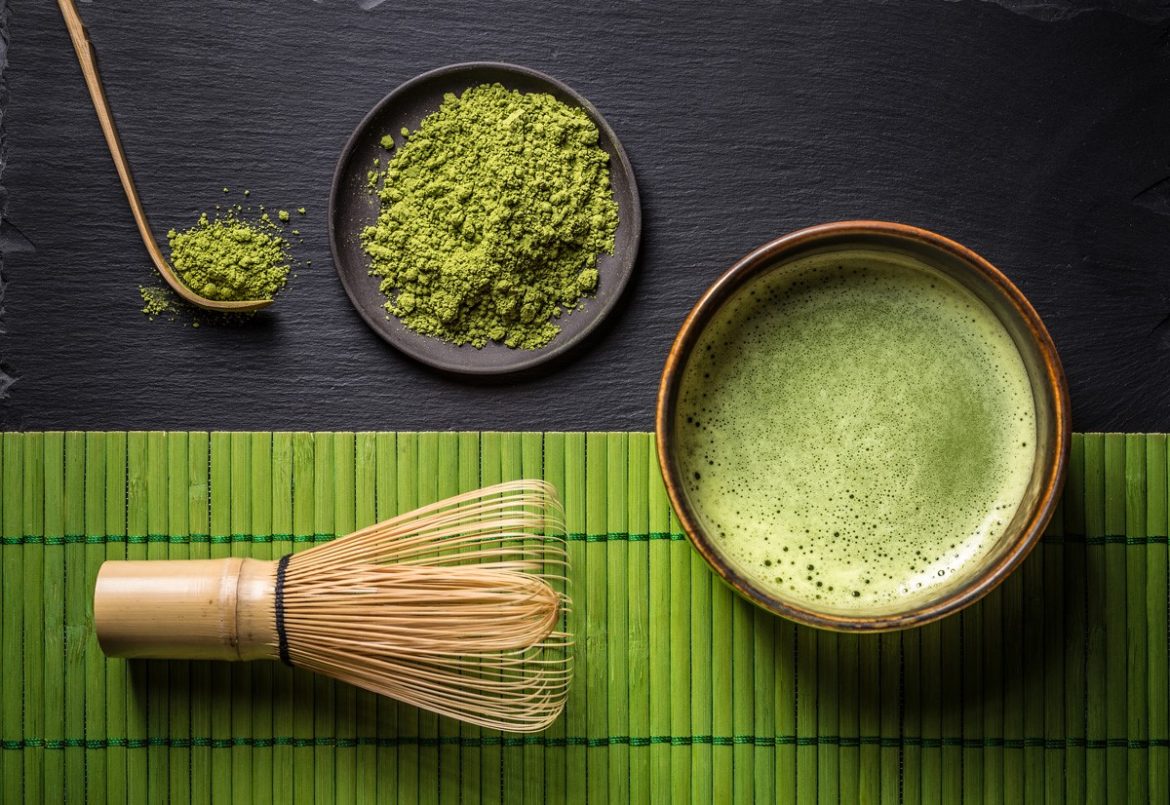
The Art of Peace –– Japanese Tea Ceremony
The Japanese tea ceremony is called Chanoyu, Sado or simply Ocha in Japanese. It is a choreographic ritual of preparing and serving Japanese green tea, called together with traditional Japanese sweets to balance with the bitter taste of the tea. Preparing tea in this ceremony means pouring all one's attention into the predefined movements. The whole process is not about drinking tea, but is about aesthetics, preparing a bowl of tea from one's heart. The host of the ceremony always considers the guests with every movement and gesture. Even the placement of the tea utensils is considered from the guests view point (angle), especially the main guests called the Shokyaku.

What is the Japanese Tea Ceremony?
The Japanese tea ceremony is an artistic pastime unique to Japan that features the serving and drinking of Matcha, a powdered Japanese green tea. Though Japanese green-tea had been introduced to Japan from China around the 8th century, Matcha powdered green-tea did not reach Japan until the end of the 12th century. The practice of holding social gatherings to drink Matcha spread among the upper class from about the 14th century. Gradually one of the main purposes of these gatherings, which took place in a Shoin (study room), became the appreciation of Chinese paintings and crafts in a serene atmosphere. (See Japanese tea ceremony history)
Having witnessed or taken part in the Japanese Tea Ceremony only once, one will come to understand that in Japan, serving tea is an art and a spiritual discipline. As an art, The Tea Ceremony is an occasion to appreciate the simplicity of the tea room’s design, the feel of the Chawan in the hand, the company of friends, and simply a moment of purity.
As a discipline, aesthetic contemplation of flower arranging, ceramics, calligraphy, and the roots of the Tea Ceremony which go all the way back to the twelfth century is required. The ritual preparation requires the person hosting a tea party to know how to cook a special meal (Kaiseki), how to arrange the flowers which will be placed in the alcove (Tokonoma). When choosing utensils and other vessels, the host (Teishu) has to consider the rank and type to make sure that they will stand out.

The objective of the Japanese Tea Ceremony
The objective of the Japanese tea ceremony is to create a relaxed communication between the host and his guests. It is based in part on the etiquette of serving tea (Temae), but is also includes the intimate connections with architecture, landscape gardening, unique tea utensils, paintings, flower arrangement, ceramics, calligraphy, Zen Buddhism, and all the other elements that coexist in harmonious relationship with the ceremony. Its ultimate aim is the attainment of deep spiritual satisfaction through the drinking of tea and through silent contemplation. On a different level, the Japanese tea ceremony is simply an entertainment where the guests are invited to drink tea in a pleasant and relaxing room. The bonds of friendship between the host and guests are strengthened during the ceremony when the host himself makes and serves the tea.
The Way of Tea
Outside of Japan, the preparation of powdered Japanese green tea is known as “The Japanese Tea Ceremony”. The Japanese refer to it as “Chanoyu” which can be translated literally as “hot water for tea”, Chado or Sado translates to "the way of tea" as in devoting one's time totally to the study and practice of the Japanese tea ceremony.
The western understanding of "a ceremony" is a set of formal acts, often fixed and traditional, performed on important social or religious occasions. However, rather than fixed, the Japanese Tea Ceremony does have flexibility since every occasion and different season calls for special and unique preparations, choice of utensils, choice of flowers for the arrangement, a hanging scroll to describe the kind of tea-meeting and objective of the host. And rather than religious it could be better explained that the host will do the best he can by studying all related aspects such as calligraphy, flower arrangement, cooking, the wearing of a kimono, ceramics and much more. Therefore, it would be more appropriate to call it “The Way of Tea” since this would refer to a way of life, or a lifestyle in the devotion of preparing the best possible bowl of powdered green tea for the guests. The Way of Tea is a subtly variable way to commune with nature and with friends. Deeply rooted in Chinese Zen philosophy, it is a way to remove oneself from the mundane affairs of day-to-day living and to achieve, if only for a time, serenity and inner peace.
Tea Philosophy

Wa, Kei, Sei, Jaku - “harmony, respect, purity, tranquility.”
“Wa” stands for harmony. As there is harmony in nature, the Teishu will try to bring this quality into the tea room and the garden around the tea house. The utensils used during the tea ceremony are in harmony with each other, so the theme is the same as well as the colors. The tea garden should be an extension of the natural flora surrounding it.
“Kei” stands for respect. The guests must respect all things, all matters without involving their status or position in life. They must crawl through a small entrance called Nijiriguchi to get into the room. In the room they will all kneel down and bow to the hanging scroll, they will sit next to each other in Seiza position on the Tatami. Respect is also shown by carefully handling and observing the tea bowl and other objects during Haiken.
“Sei” stands for purity. Crawling into the tea room, one is to leave behind all thoughts and worries of daily life. The tea room or Chashitsu is a different world where one can re-vitalize, slow down, and enjoy the presence of friends. The gesture of purity is enhanced by the ritual cleaning of the Chawan, Natsume, Chashaku, and Kensui lit by the host. The real grand master of tea does not perform the Japanese tea ceremony from memory but from a pure heart.
“Jaku” stands for tranquility. Only after the first three concepts (harmony, respect, and purity) are discovered, experienced and embraced, can people finally embody tranquility. This was one of the teachings of the Japanese tea ceremony master Sen no Rikyu (1522 – 1591).
Wabi appreciation in the tea ceremony
Wabi - “Appreciating the beauty of things that are simple and natural,” the old meaning is “the loneliness of living in nature, remote from society.”
The tea room’s interior will seem imperfect and rustic. The wall might be unpainted and visible wooden pillars and beams are untreated, just as it would look like in nature.
Contrary to western houses, the tea house is not a small museum with lots of collectibles, there is only the essentials needed for a unique meeting with the Teishu or host. There is only one hanging scroll in the alcove of the Chashitsu, there is no furniture or maybe a simple Tana to display tea equipment. The only sound is that of boiling water in the Kama, only the smell of incense from the fire, one flower or branch in the Hana-ire. Conversation is kept to that of the utensils in the tea room, and other equipment used.
kokoroire devotion to the way of tea
Kokoroire – “Pouring one’s heart totally into (devotion of) the tea ceremony.” The Teishu or host is someone who devotes his life to the ritual preparation of a bowl of tea. They live “the way of tea.”
